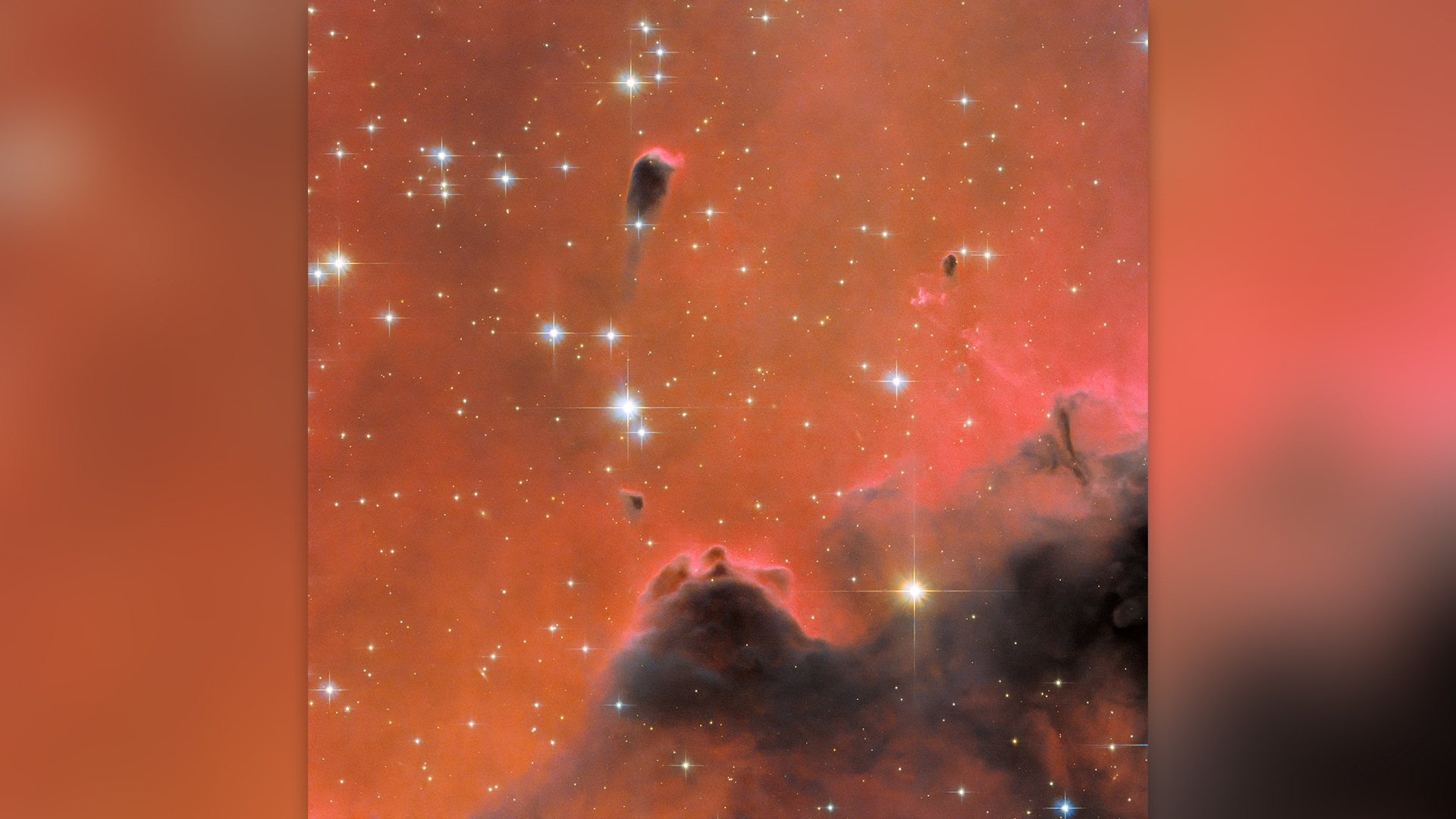Space photo of the week: Hubble spies a 'cosmic tadpole' in a sea of red
Amid the Soul Nebula's harsh red light, a cocoon of gas holds baby stars in the making in this ethereal new Hubble telescope image.

What it is: The Soul Nebula (also called Westerhout 5 or IC 1848) and a star-forming bubble within it
When it was taken: Sept. 29, 2023
Where it is: 7,000 light-years from Earth in the constellation Cassiopeia, in the Perseus spiral arm of the Milky Way galaxy
Why it's so special: A beautiful new Hubble Space Telescope image published in late September shows a dark, tadpole-shaped object within a sea of red.
That sea is a nebula — a huge cloud of dust and gas in space — called the Soul Nebula. Specifically, it's an emission nebula — a bright, diffuse cloud of electrically charged gas that emits its own light, according to NASA. The nebula is red because it's emitting H-alpha light, which is the result of electrons within hydrogen atoms releasing light as they become less energetic.
Related: 25 gorgeous nebula photos that capture the beauty of the universe
Published to coincide with the fall foliage season in the Northern Hemisphere, the image's bright-red light is home to what astronomers call an evaporating gaseous globule (EGG). Like all EGGs, the dark, tadpole-shaped EGG in this nebula's upper center left is a dense, compact pocket of molecular hydrogen gas found in star-forming regions, according to HubbleSite. Besides the acronym, there's another reason for the "EGG" name: These bubbles of interstellar gas are dense enough to collapse under their own weight to form young stars, akin to eggs hatching to reveal the babies within.
Sign up for the Live Science daily newsletter now
Get the world’s most fascinating discoveries delivered straight to your inbox.
However, this EGG — named KAG2008 globule 13 and J025838.6+604259 — is different from most. While other EGGs are connected in a nebula, this one is a detached free floater — a "frEGG" — with a distinct "head-tail" shape. Ultraviolet radiation from stars can make it harder for baby stars to thrive, but the gas within frEGGs and EGGs is so dense that the "eggs" act as cocoons that help baby stars form.
How to see it in the night sky: The Soul Nebula is part of the star-forming Heart and Soul Nebula (IC 1805), a popular deep-sky sight for telescopes in the Northern Hemisphere winter.

Jamie Carter is a freelance journalist and regular Live Science contributor based in Cardiff, U.K. He is the author of A Stargazing Program For Beginners and lectures on astronomy and the natural world. Jamie regularly writes for Space.com, TechRadar.com, Forbes Science, BBC Wildlife magazine and Scientific American, and many others. He edits WhenIsTheNextEclipse.com.









